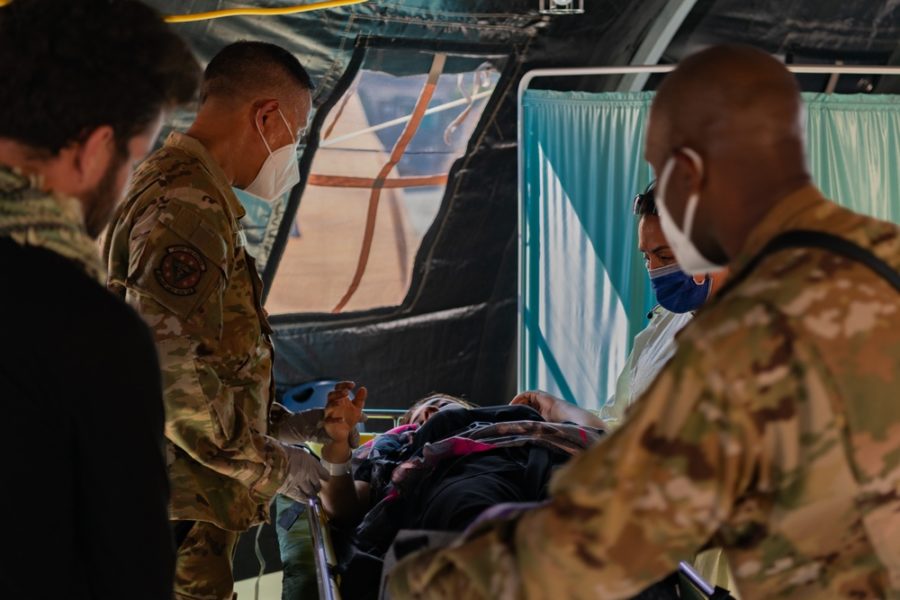Afghans fleeing the Taliban in August concealed medical conditions ranging from battlefield wounds to high-risk pregnancies out of fear that doing so might cause U.S. military members to bar them from escaping Kabul. In response, Air Mobility Command provided medics and nurses, turning transports into “flying hospitals” that delivered a baby and developed new means of care on the fly.
“A vast majority of individuals coming out of Afghanistan did not disclose their medical needs,” Brig. Gen. Norman S. West, command surgeon for Air Mobility Command, said in a sideline interview during AFA’s Air, Space & Cyber Conference in National Harbor, Md. AMC assigned 30 technicians and 30 nurses from nine medical groups to rescue efforts.
“We knew that by having medics on the aircraft, we could provide that medical care should they need it,” West said.
Passenger Medical Augmentation Teams, pairing a nurse and medical technician, accompanied each evacuation flight. They treated partial amputations, festering wounds, dehydration, heat-related injuries, and pregnant women with diabetes, malnutrition, and high blood pressure.
Of about 72,000 Afghans flown out of Afghanistan, roughly 9,000 of them were were pregnant, West said.
“We’re talking about individuals who are in their last trimester, who shouldn’t be flying,” West said. “But when your life depends on it, you do whatever you have to do.”
Soon, AMC also began to fly obstetrician-gynecologists on the evacuation flights. “What we don’t want to do is start moving our Afghan partners who have sacrificed everything for us, and have them give birth and not be able to do something about it,” West said.
When terrorists attacked a crowded airport gate, killing 13 U.S. service members and injuring 18 more, AMC was able to quickly evacuate the wounded, rerouting an aeromedical evacuation flight that was about to take off from Ramstein Air Base, Germany, from a another requirement and dispatching it to Kabul.
AMC spokesman Capt. Frederick M. Wallace said the jet was re-tasked on the runway. “This kind of flexibility is key to responding to dynamic situations around the globe,” he said. When troops are wounded and need a level of care unavailable where they are, AMC’s job is to “get there as quickly as possible.”
The Afghans were flown safely to onward locations in the Gulf region and European countries where enhanced medical attention was available on site. Once out of Afghanistan, many of the women remained at base housing for the remainder of their pregnancy.
One woman gave birth aboard a C-17 evacuation flight from Afghanistan.
“This is something we’ve never done before,” West said of the new and varied ways the medics were employed during the evacuation effort. “We’ve always had a binary solution: aeromedical evacuation or critical care air transportation, and there was never an in-between.”
AMC is now looking at how to provide specialty care on flights, including obstetrics, burn care, and extracorporeal membrane oxygenation, or ECMO, heart-lung specialists.
“It literally is a flying ICU is what you have. It is one of the most impressive things you’ll see,” West said. “And we are the only nation that has this robust kind of system.”
